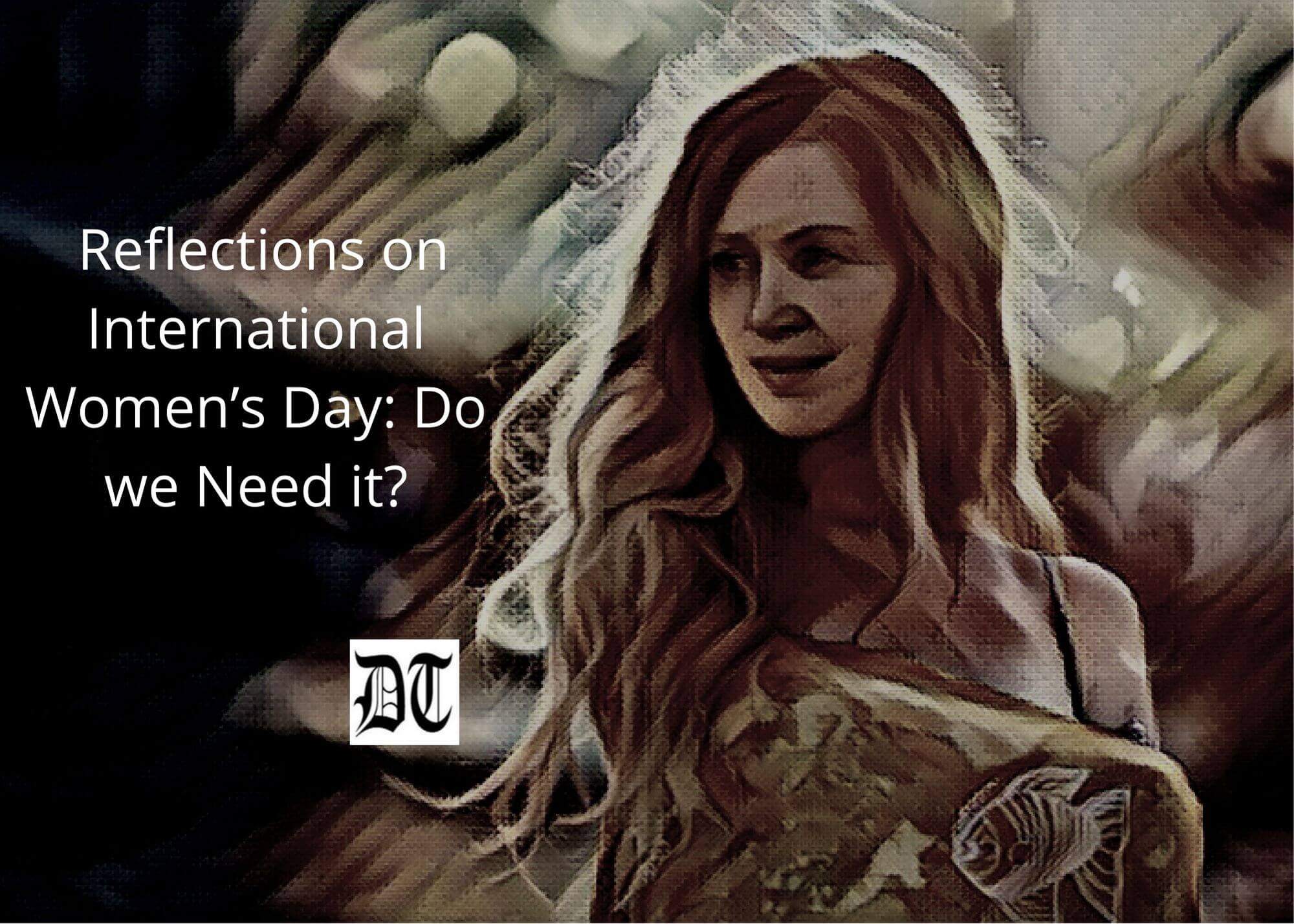Use of torture, both physical and psychological torture, illegal detentions and filing of false cases go unchecked and are used as an instrument for forced confession, submission and extortion. Over the years, the police forces in every state of India have created a parallel structure of non-state actors to settle scores. In its reports, Human Rights Watch, has documented the cases of state sponsored violence and consequent cases of torture. These reports highlight that invariably the end receiver of police excesses, torture or brutality are the poor, Dalits, tribal people, and religious minorities. Mohanlal reasons that the main idea of introduction of Prevention of Torture Bill, 2010 Bill in the Parliament was more to uplift India’s international image rather than to protect its own citizens from torture. Here’s an expose, in the weekly column, exclusively in Different Truths.
The state of the rule of law is emerging as a global crisis next to the ongoing economic recession. This is predominantly felt in the poor countries as well as in aspiring developed countries like India, Brazil, South Africa and others. One of the stakeholders, which continues to hit the headline and is made responsible for the declining state of the rule of law in all these countries remains the police and paramilitary forces, notwithstanding everyone’s acknowledgement of the good works they continue to do.
In a country like India, the absoluteness of power coupled with political patronage enjoyed and abused by them has often been highlighted in the media. The judiciary and independent investigators, on various occasions, have cautioned the society and the state about the impending threat to human rights and liberty, and to the functioning of democratic institutions, arising from the impunity exercised by the police on a day to day basis. Use of torture, both physical and psychological torture, illegal detentions and filing of false cases go unchecked and are used as an instrument for forced confession, submission and extortion. Over the years, the police forces in every state of India have created a parallel structure of non-state actors to settle scores. In its reports, Human Rights Watch, has documented the cases of state sponsored violence and consequent cases of torture. These reports highlight that invariably the end receiver of police excesses, torture or brutality are the poor, Dalits, tribal people, and religious minorities.
The above groups, as the studies point out, are subject to community punishment. The degree of punishment remains more arbitrary and severe for religious minority groups in a situation like communal riots. Male members, including children, are disproportionately subjected to field interrogation and are more likely to be frisked and searched and asked to stand in a queue for hours in a public place, once they are identified as suspects. Several commissions set up by government and the courts have passed strictures against the state agencies for practicing humanly degrading torture tools. Invariably, the police searches violate the legal principles on search and seizure. Clearly, such abuses entail costs to the legitimacy of law enforcement agencies in the eyes of the citizens. For those at the receiving end, hardly trust the police and see the later as threatening representatives of an oppressive structure. The rules of engagement for the police are clearly defined and much of the police training focuses on employing the means of violence within the limits of law. The great majority of the police behavior falls within prescribed limits. Nonetheless, aggressive transgression occurs periodically. Why would the police employ excessive force when they are empowered by the law to use the force necessary to accomplish a legitimate police duty?
Modern democracies employ domestic police agencies to control internal wrongdoers and maintain social order, and the legitimate use of force to protect citizens and officers from the dangerous people in their midst constitutes the essence of the police role. Even the use of deadly, disproportionate force is deemed legally justified. The reality that the police limit individual freedom requires that their authority be clearly circumscribed in democratic societies. As Locke has said, force that occurs under colour of authority, without lawful necessity constitutes excessive force or public brutality. Of late, a section of the media, political dissension and civil society group have been defending police excesses as a demand for a nationalist duty and not as a violation of the constitutional duty.
The social and political approval of physical and psychological torture, inflicted by the state machinery, has reached an alarming proportion. Those stand in defense of torture hardly realise the consequences of torture, which goes far beyond immediate pain. Many victims suffer from post-traumatic stress disorder (PTSD), which includes symptoms such as flashbacks (or intrusive thoughts), severe anxiety, insomnia, nightmares, depression and memory lapses. Torture victims often feel guilt and shame, triggered by the humiliation they have endured. Many feel that they have betrayed themselves or their friends and family. All such symptoms are normal human responses to abnormal and inhuman treatment.
Documents shows that Amir, a salesman before being arrested on charges of terrorism and taken to the infamous Abu Ghraib prison narrated how, he was forced to lay down in urine and feces, stay naked in his cell for days, and “howl like dogs do,” while being pulled by a dog leash.
According to his accounts, he was also sodomised with a broomstick and had his genitals stepped on. After his release from Abu Ghraib in November 2004 – without being charged – he had a slew of physical and psychological ailments, including symptoms of post-traumatic stress disorder, according to Dr. Allen Keller, Director of the Bellevue/NYU Program for Survivors of Torture. Keller testified at a U.S. Helsinki Commission briefing in July 2008. “It’s like in my head I have never left Abu Ghraib,” Keller says Amir told doctors. President Obama denounced “brutal methods” of interrogation in a national security speech, asserting they undermine the United States’ war and counter-terrorism efforts and “alienate us in the world.” In January, he issued an executive order banning torture, and plans to shut down the Guantanamo Bay detention center. The Latin American experience of the role of Dictators, Military, Drug Cartels, and Arms Groups in inflicting violence and torture has impacted not only families but generations. It is also a seed for new violence, planted on extremely fertile ground. Children of tortured parents reveal more psychosomatic symptoms, headaches, depression, learning difficulties and aggressive behavior. They manifest more severe trauma related psychotic symptoms, developmental arrest or delays.
The world’s fight against torture took a quantum jump when 146 countries ratified UNCAT that prohibits any forms of torture and degrading behavior. However, Government of India did not find it relevant to prioritise its ratification and refuses to feel embarrassed about its failure as a pro-poor progressive democracy. The main idea of introduction of Prevention of Torture Bill, 2010 Bill in the Parliament was more to uplift India’s international image rather than to protect its own citizens from torture.
Preventing torture and tackling impunity for those who torture are essential components of a country’s human security, an integral to fair legal systems and the rule of law. However, the Bill, 2010 lacks both in quality and substance. According to some commentators, Clause 3 of the Bill defines “torture” as an intentional act which causes “grievous hurt” or “danger to life, limb or health”. Grievous hurt is defined under Section 320 of the Indian Penal Code to include extremely serious injuries such as permanent loss of eye or ear, emasculation, bone fractures, or hurt which causes severe and debilitating pain for twenty days or more. In other words, a very high threshold has been set for an act to qualify as “torture”. Even the “danger to (mental or physical) health” provision is not very helpful. The term “danger” implies a certain level of seriousness, while mental and physical “health” has frequently been interpreted by courts in civil cases to only include medically recognised illnesses. Given the general rule that criminal laws are interpreted strictly, courts are likely to err on the side of the accused and demand a high threshold for “danger to health”. The “danger to health” standard must also be contrasted with the definition of “hurt” in the Indian Penal Code, which simply includes “bodily pain”. Similarly, Article 1(1) of the U.N. Convention defines “torture” as the intentional infliction of “severe pain or suffering, whether physical or mental”.
Those who ask for this pro-poor legislation argue that torture must be understood primarily in terms of the pain that it inflicts, rather than any long-term impact. But, the Bill is likely to be interpreted so that acts that cause severe pain without causing any lasting damage to a person’s health may not amount to torture. Thus, many cases of water-boarding, sexual assault, deprivation of food, water or sleep, whipping, rubbing chilies on sensitive body parts and other such barbaric acts readily condemned by most reasonable people may not amount to “torture” under the proposed Bill. As if this definitional ambiguity was not bad enough, the Bill is cynically silent on “other cruel, inhuman or degrading treatment or punishment,” whose prohibition is an essential requirement under the UN Convention.
The Indian policy makers are hesitant to take a collective decision on how much to power the powerful (citizens) and when to let go the most powerful tool of control (police) of the public mind. The question is how long will the nation wait?
Reference:
‘Race and Police Brutality: Roots of an Urban Dilemma’, Malcolm, Holmes and Smith, State University of New York Press, 2008
©Dr Mohanlal Panda
Pix from Net.





 By
By
 By
By
 By
By